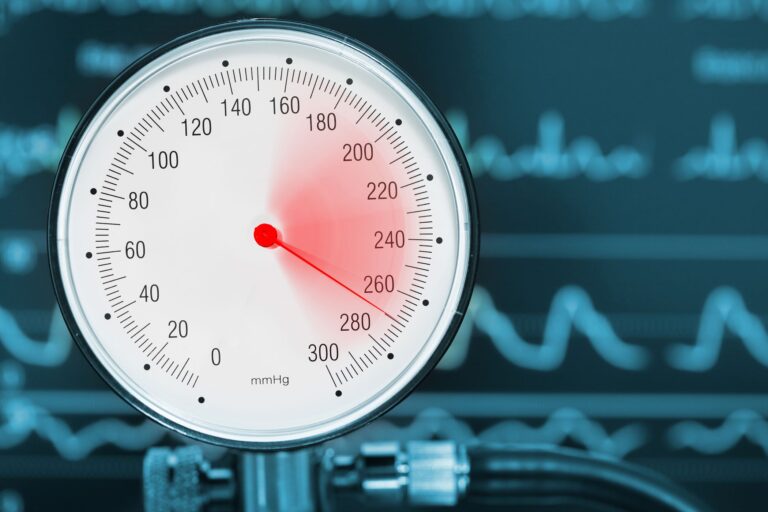High blood pressure (also referred to as HBP, or hypertension) is when your blood pressure, the force of blood flowing through your blood vessels, is consistently too high.
Nearly half of American adults have high blood pressure, and many don’t even know they have it. This is because hypertension has no symptoms most of the time. The best way to know if you have high blood pressure it is to have your blood pressure checked.
Myths about High Blood Pressure
Myth: People with high blood pressure will experience symptoms, like nervousness, sweating, difficulty sleeping or facial flushing.
Truth: High blood pressure is a largely symptomless “silent killer.” If you ignore your blood pressure because you think a certain symptom or sign will alert you to the problem, you are taking a dangerous chance with your life.
The best evidence indicates that high blood pressure does not cause headaches or nosebleeds, except in the case of hypertensive crisis, which is a medical emergency when blood pressure is 180/120 mm Hg or higher. If your blood pressure is unusually high AND you have headache or nosebleed and are feeling unwell, wait five minutes and then retest. If your reading remains at 180/120 mm Hg or higher, call 911.
Contact your doctor if you are experiencing severe headaches or nosebleeds and are otherwise unwell, as you could be experiencing symptoms of other health conditions.
Have you ever heard of the old-time adage: “An ounce of prevention is worth a pound of cure”? It’s best to avoid high blood pressure altogether. Healthy lifestyle choices are a great place to start.
With proper treatment and management, you can control your blood pressure to help you live a long and healthy life.
For more information on heart health and blood pressure, head on over to the American Heart Association’s website at heart.org




